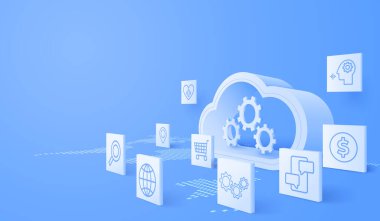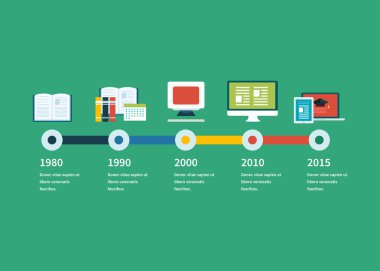Building Resilient Digital Platforms: A Guide for Modern Enterprises

In an era where businesses are defined by their ability to adapt, scale, and innovate, building resilient digital platforms is essential for sustained success. A resilient platform not only withstands disruptions but also ensures smooth operations, scalability, and flexibility, regardless of changes in the technological landscape or market demands. This blog will delve into best practices for developing such platforms, focusing on the role of microservices architecture and APIs in accelerating digital progress.
Why Resilience is Essential in Digital Platforms
Resilience in digital platforms refers to the system’s ability to recover from disruptions, maintain performance under stress, and adapt to changes swiftly. The growing complexity of business environments and customer expectations has made it critical for platforms to handle failures gracefully and ensure continuity.
Key reasons resilience is essential include:
1. Customer Expectations: Users today expect seamless, uninterrupted service. A resilient platform ensures that businesses can meet these expectations even during system failures or peak demand periods.
2. Adaptability to Change: As businesses adopt new technologies and models, resilient platforms allow for easy integration and evolution without causing major disruptions.
3. Operational Continuity: Disruptions like server downtime, cybersecurity threats, or software failures can lead to significant losses. Resilient platforms minimize downtime and ensure continuous business operations.
Best Practices for Developing Scalable and Resilient Digital Platforms
1. Adopt a Microservices Architecture: Microservices architecture breaks down a platform into smaller, independent services that communicate with each other via APIs. Each microservice handles a specific function, allowing developers to manage, deploy, and scale them independently.
Benefits: Microservices ensure that a failure in one part of the system does not impact the entire platform. This isolation makes it easier to scale specific services according to demand, improving overall resilience and flexibility.
Tips: Start by breaking down core functions into separate microservices, then gradually adopt this architecture across the entire platform.
2. Utilize APIs for Seamless Integration: Application Programming Interfaces (APIs) act as bridges between different services, enabling them to interact and share data. APIs play a crucial role in enabling digital platforms to connect various tools, software, and systems, ensuring they work together seamlessly.
Benefits: APIs foster flexibility by allowing easy integration of new features or services without the need for complete system overhauls. This integration reduces risks and ensures the platform evolves smoothly.
Tips: Design APIs that are scalable and well-documented, so they can be reused across multiple services and easily integrated with third-party tools.
3. Implement Fault Tolerance and Redundancy: Fault tolerance ensures that the platform can continue to operate even if a component fails. By implementing redundancy—having backup systems or services that can take over when the primary ones fail—platforms can enhance their resilience.
Benefits: Redundancy and fault tolerance ensure uninterrupted service, even during technical glitches, server downtimes, or unexpected traffic spikes.
Tips: Deploy failover mechanisms and use load balancers to distribute traffic evenly across redundant systems.
4. Embrace Cloud-Native Solutions: Cloud-native architectures are inherently designed to support scalability, flexibility, and resilience. By leveraging cloud services, businesses can easily scale resources up or down based on demand, ensuring that platforms can handle fluctuating workloads without sacrificing performance.
Benefits: Cloud-native platforms are easily adaptable to growth and change, with the added advantage of built-in security and disaster recovery mechanisms.
Tips: Choose cloud providers that offer auto-scaling and disaster recovery solutions to optimize platform resilience.
5. Continuous Monitoring and Performance Testing: To ensure resilience, it’s crucial to continuously monitor the platform’s performance and test it under various conditions. Load testing, stress testing, and monitoring for potential vulnerabilities help identify weak points in the platform before they lead to failure.
Benefits: Continuous testing ensures the platform remains stable under different conditions, including unexpected traffic surges or security breaches.
Tips: Implement automated monitoring tools that provide real-time insights into system performance, and schedule regular load and stress tests.
6.Ensure Scalability Through Containerization: Containerization is the practice of packaging software and its dependencies into containers that can be deployed consistently across different environments. This approach makes it easier to scale services as needed, ensuring flexibility and resilience in response to changing demands.
Benefits: Containers simplify the deployment process and ensure that services can be easily replicated, scaled, or moved to different environments without compatibility issues.
Tips: Use container orchestration platforms like Kubernetes to manage and scale containers across multiple environments efficiently.
Microservices and APIs: Driving Digital Acceleration
Both microservices and APIs play crucial roles in accelerating digital platforms. Their combined power enables businesses to move quickly, integrate new technologies, and scale efficiently.
Microservices Architecture: Facilitates rapid development and scaling of individual components without disrupting the entire system. By modularizing functions, teams can work on different parts of the platform simultaneously, speeding up development and reducing downtime.
APIs: Enable fast integration of new features or external services. APIs ensure that platforms remain flexible, allowing companies to adapt to new business models, integrate with partners, or quickly launch new digital products.
Together, these technologies form the backbone of resilient digital platforms that can grow and evolve in tandem with market demands.
Conclusion
Resilient, scalable, and flexible digital platforms are the foundation of modern enterprises looking to thrive in a competitive environment. By adopting microservices architecture, leveraging APIs, and following best practices such as fault tolerance, cloud-native solutions, and continuous monitoring, businesses can build platforms that are future-ready and capable of handling whatever challenges come their way.
At Raphus Solutions,we specialize in helping enterprises build robust, resilient platforms that accelerate their digital transformation journeys. With our expertise in digital product engineering and platform development, we empower businesses to innovate faster and maintain operational excellence. Contact us today to learn how we can help you build a platform that supports long-term growth and success.



